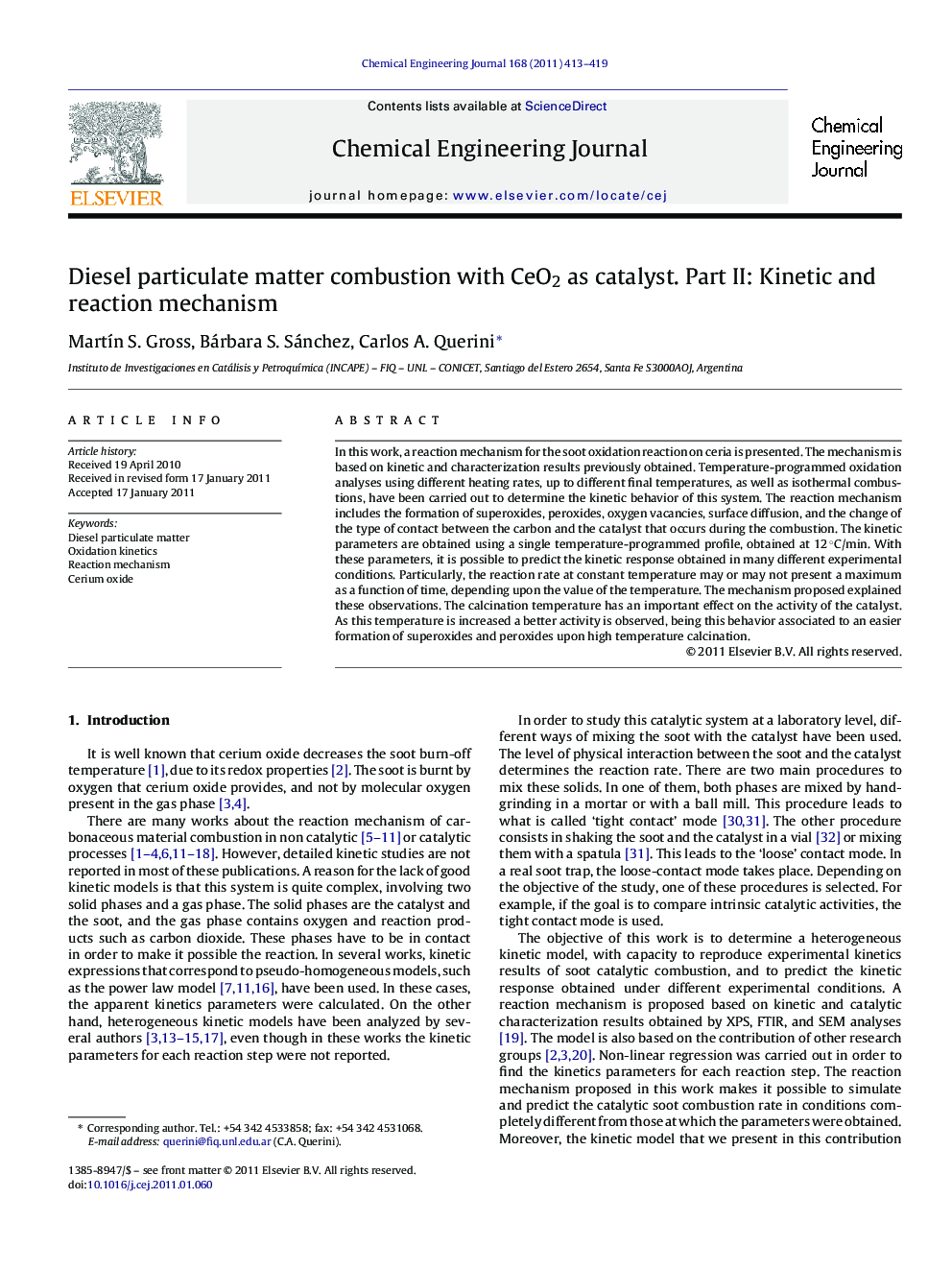| Article ID | Journal | Published Year | Pages | File Type |
|---|---|---|---|---|
| 151444 | Chemical Engineering Journal | 2011 | 7 Pages |
In this work, a reaction mechanism for the soot oxidation reaction on ceria is presented. The mechanism is based on kinetic and characterization results previously obtained. Temperature-programmed oxidation analyses using different heating rates, up to different final temperatures, as well as isothermal combustions, have been carried out to determine the kinetic behavior of this system. The reaction mechanism includes the formation of superoxides, peroxides, oxygen vacancies, surface diffusion, and the change of the type of contact between the carbon and the catalyst that occurs during the combustion. The kinetic parameters are obtained using a single temperature-programmed profile, obtained at 12 °C/min. With these parameters, it is possible to predict the kinetic response obtained in many different experimental conditions. Particularly, the reaction rate at constant temperature may or may not present a maximum as a function of time, depending upon the value of the temperature. The mechanism proposed explained these observations. The calcination temperature has an important effect on the activity of the catalyst. As this temperature is increased a better activity is observed, being this behavior associated to an easier formation of superoxides and peroxides upon high temperature calcination.
